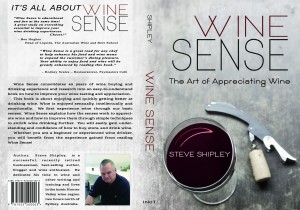I ran a successful preorder campaign to raise funds and help get my book, Wine Sense, published. I provided the option to order hardcover copies and EBooks. Now that I have been through the process, I would only use paperback and Ebook as the publishing formats. Ebooks can be easily distributed almost anywhere in the world and the cost of distribution is only 10 – 20 cents per book, based on the size of the book. By using medium-resolution photos instead of high-resolution photos (which I used for the hardcover print run), I was able to keep my download distribution costs to less than 10 cents.
 And now that I have seen the hardcover printed book and the paperback printed by CreateSpace, I am convinced that while the hardcover copy looks slightly more professional, it is not by much and does not make a real difference in terms of the book’s attractiveness. The commercial benefits of doing only paperback and EBook publishing formats are staggering, and include:
And now that I have seen the hardcover printed book and the paperback printed by CreateSpace, I am convinced that while the hardcover copy looks slightly more professional, it is not by much and does not make a real difference in terms of the book’s attractiveness. The commercial benefits of doing only paperback and EBook publishing formats are staggering, and include:
- My initial hardcover print run (for 1,500 books) cost a little more than $10,000 which is a massive capital outlay and risk
- I can do POD (Print-On-Demand) runs of 50 or 100 books at a time (or even one!) with an up-front capital outlay of only $250 – $500 or so including shipping
- I have to take care of the warehousing, logistics and administration of selling the hardcover books (unless I pay someone else like Amazon to do so) and having 1,500 books sitting in my house has been a bit of an inconvenience!
- If readers or I find errors or think it prudent to make other revisions, I can continue to make them and improve the book through subsequent POD runs; I am not locked into original mistakes for several years, trying to sell off my initial hardcover book run.
- Paperbacks are lighter and have a thinner width, making it possible to ship most of them as a document instead of a parcel which would triple or quadruple mailing and distribution costs.
If I really wanted to do small hardcover print runs, Ingram Spark provides the option of doing so, and still provides similar benefits (with the exception of lower shipping costs as the hardcover copy will be heavier and thicker than the paperback).
Writing, formatting and publishing Wine Sense was a great experience and I learned heaps from doing so. I developed a workflow which allowed me to format hardcover, paperback, interactive PDF and various EBook formats with minimal effort if done in the right order. I also learned how to keep my costs down for creating, publishing and shipping books. Hardcover copies have a place for special and unique pictorial books, but for the type of non-fiction I write and most fiction, publishing formats of paperbacks and EBooks make far more commercial sense; they are the only two publishing formats I will use in the future.
My next blog posts related to this will cover:
- What options to use for POD printing and why
- What EBook platforms to publish to and why
- Workflows when laying out both print and EBooks versions
Please let me know if you have any feedback or thoughts that confirm your experiences or are counter to this!
Steve Shipley, author of Wine Sense, available now!
© 2014. InkIT Publishing. All rights reserved.
InkIT Publishing on Facebook
Inspirational Writing and Publishing Pinterest Boards
Twitter: InkIT Publishing @inkitpub; Steve Shipley @shipleyaust
